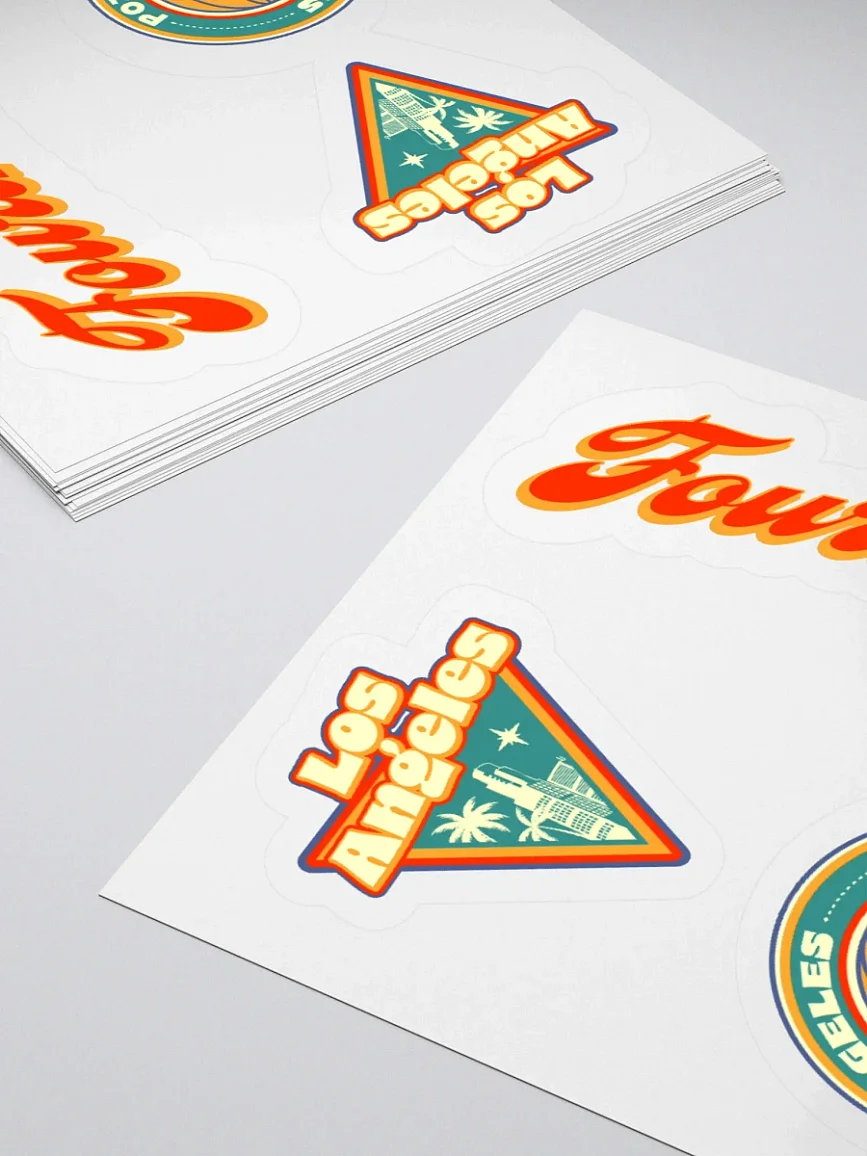Social Media Branding: A Guide for Creators

In the fast-evolving world of digital content creation, social media branding has become a cornerstone for success. For creators, whether they are artists, writers, musicians, or influencers, establishing a strong presence on social media is not just about gaining followers but creating a meaningful and lasting connection with an audience. This guide aims to delve into the intricacies of social media branding, providing insights and strategies to help creators build and strengthen their online identity.
As we embark on this journey, it's essential to acknowledge the dynamic nature of the digital space. Keeping a pulse on the latest trends and strategies is crucial for staying ahead in a highly competitive landscape. To provide a comprehensive perspective, we'll explore the fundamental concepts of social media branding, dissect key elements of a successful branding plan, and outline effective strategies that creators can implement to enhance their online presence.
Before diving into the strategies, let's first understand the essence of social media branding and its pivotal role in shaping a creator's digital identity.
What Is Social Media Branding?
Social media branding is the deliberate and strategic effort to craft and communicate a consistent brand image across various social media platforms. It involves shaping how a creator is perceived by their audience, cultivating a sense of familiarity, trust, and loyalty. It involves employing storytelling techniques and advanced technologies to create emotionally resonant messages, fostering a "human," approachable, and relatable brand persona.
For creators, social media branding is more than just creating a recognizable logo or choosing a color palette. It's about curating an authentic online persona that resonates with their target audience. It’s the key to creating a distinct and memorable brand persona that resonates with consumers on various social media platforms. In a crowded digital space, social branding acts as a compass, guiding creators in establishing a unique and memorable presence.
7 Key Elements for the Perfect Social Media Branding Plan
Crafting a successful social media branding plan requires a thoughtful approach. Here are 7 essential elements that creators should integrate into their strategy:
1. Consistent Visual Identity
At the heart of a compelling brand is a visually cohesive identity, with logos playing a pivotal role in facilitating instant recognition. A well-designed logo acts as a unique identity for your company, imprinting a lasting image in your audience's mind. Maintaining logo clarity and visibility ensures that users can easily distinguish your company's posts from others, accomplishing the primary goal of social media branding.
Whenever you share content on social media, including your brand logo and name, it becomes crucial to meet your customers' expectations and contribute to word-of-mouth promotion. Consistency in logo design (following a uniform color pattern) not only reinforces your brand image but also enhances brand recognition. This visual consistency builds trust, ensures attention-grabbing posts, and forms an integral part of your brand promotion strategy.
2. Compelling Storytelling
Every creator has a unique story, and storytelling is a powerful tool for building emotional connections. Sharing personal anecdotes, struggles, and triumphs creates a relatable narrative that resonates with the audience. This shared understanding elevates a brand's personality, fostering a deeper connection with customers.
By weaving genuine stories, not only about the brand but also about customers who advocate for it, you create authentic connections that resonate with the audience. In essence, embracing storytelling in your branding plan invites your audience to be part of a narrative where they play a meaningful role, boosting engagement and brand loyalty.
YouTuber Casey Neistat's "Make It Count" Nike ad showcases his unique storytelling by combining his style of vlogs with his own message: "What does making it count mean to me?"
3. Consistent Brand Voice
A consistent brand voice strengthens brand recognition. Whether humorous, inspirational, or informative, the tone and style of communication should align with the brand's identity. Having a consistent brand voice is not merely a stylistic choice; it serves as a crucial differentiator, allowing a brand to stand out in a competitive market, shaping its identity, and establishing emotional connections with customers.
Beyond recognition, a consistent brand voice contributes to building trust, adapting to diverse circumstances, and tailoring communication to specific demographics. Its flexible nature makes it an instrumental tool for engagement and persuasion, playing an indispensable role in the long-term success of your social media branding strategy.
Comedian and Influencer Duski uses his brand of comedy to promote his record label 'Coulda Been Records' by satirically displaying himself as a hip-hop mogul.
4. Target Audience Analysis
Understanding the audience is fundamental to effective branding. Creators should conduct thorough demographic and psychographic analyses to tailor their content and messaging. This ensures that the brand speaks directly to the interests and aspirations of the target audience.
Try building a customer persona of your ideal target audience. This instrument serves as an imaginary representation of the brand's ideal customer, merging insights from market research and user data. This persona encompasses various details like age, gender, income, and location, allowing brands to visualize and understand their potential customers.
5. Content Strategy
A well-defined content strategy aligns with the brand's identity and resonates with the audience. Creators should establish a content calendar, incorporating a mix of engaging formats – from videos and images to written posts. Content calendars serve as a hub for all planned posts, creating a big-picture approach to content planning. Repurposing content across platforms and considering platform-specific best practices, including ideal posting times, enhance the overall effectiveness of your content strategy.
To infuse creativity into data-driven decision-making, creators should experiment with different content types and formats, catering to the preferences of their social buyer personas. This type of content diversity can be achieved through how-to videos, collaborations with creators, trends, employee features, contests, behind-the-scenes glimpses, live sessions, polls, and even quizzes.
6. Engagement and Community Building
Social media is not a one-way street. Creators must actively engage with their audience, responding to comments, asking questions, and fostering a sense of community. Building a community around the brand creates a loyal fan base that actively participates and advocates for the creator.
Moreover, creators can leverage their influence by encouraging others to share their content. Incorporating this into your social media content strategy involves acknowledging and reposting content shared by your audience. By encouraging your audience to respond to queries and share their thoughts, creators stimulate engagement on social media platforms and encourage discussions in blog post comments. This approach not only builds a strong sense of community but also enhances the authenticity and credibility of the brand.
Fashion and beauty influencer Camila Coelho is known to engage with her followers on her social media accounts, taking the time to like and respond to their comments.
7. Platform-Specific Optimization
Different social media platforms cater to diverse audiences and content formats. Creators should optimize their content for each platform, tailoring posts to suit the preferences of users on specific networks. For instance, recognizing that Instagram is a highly visual platform favoring high-quality images and short video clips, while Twitter/X thrives on a fast-paced, conversational style allows creators to tailor content accordingly.
Furthermore, to enhance content engagement and shareability, it's essential to conduct research on your target audience, gaining insights into their interests, preferences, and behavior on social media. Adapting your tone and language to fit the unique culture and communication style of each platform is key. Utilizing platform-specific elements such as hashtags on TikTok, Instagram, or Twitter/X for broader discoverability and incorporating emojis to convey emotion and personality enhances the content's effectiveness.
Being familiar with these platform-specific nuances equips creators to craft content that not only aligns with the unique characteristics of each platform but also performs exceptionally well, maximizing its impact on your intended audience.
Now that we've outlined the crucial elements let's delve into specific strategies that creators can employ to elevate their social media branding.
Effective Social Media Branding Strategies
Building on the foundational elements, creators can implement the following proven strategies to enhance their social media branding:
Content Marketing Excellence
Content is the currency of social media. Creators should focus on creating high-quality, valuable content that aligns with their brand. Whether it's blog posts, videos, or infographics, content marketing excellence establishes authority and attracts a dedicated audience.
Influencer Collaborations
Collaborating with influencers in the same niche amplifies reach and credibility. Strategic partnerships introduce the brand to a new audience while benefiting from the influencer's established trust with their followers.
Community Engagement and Interaction
Actively engaging with the audience is crucial for sustained success. Conducting Q&A sessions, polls, and seeking feedback fosters a sense of community. Genuine interactions build a loyal following that feels heard and valued.
Consistent Branding Across Platforms
Maintaining a unified brand image across all platforms is vital for recognition. From profile pictures to cover photos and bio descriptions, consistency ensures that the audience easily identifies the brand, regardless of the platform.
User-Generated Content (UGC)
Encouraging followers to create content related to the brand fosters a sense of community and authenticity. UGC serves as social proof, showcasing the brand's impact on its audience. Reposting user-generated content also strengthens the bond with followers.
Data-Driven Optimization
Analytics provide valuable insights into audience behavior and preferences. Creators should leverage data to refine their strategies continuously. By analyzing metrics such as engagement rates, demographics, and popular content, creators can tailor their approach for maximum impact.
Strategic Hashtag Use
Hashtags are powerful tools for increasing discoverability. Creators should research and use relevant and trending hashtags to expand their reach. Strategic hashtag use also aligns the brand with broader conversations and trends in the online space.
Start Monetizing Your Brand Today!
Building a personal brand is a journey that demands dedication, creativity, and consistency. Once a strong brand is established, you can explore opportunities to monetize your efforts. One platform that facilitates this transition is Fourthwall.
Fourthwall is a unique, creator-focused e-commerce platform that enables content creators to launch a website, source and sell products, and offer memberships to their supporters. With Fourthwall, you can design a membership site or sell customized merchandise like t-shirts, hats, drinkware, and other accessories to build recurring revenue streams and engage with your community. Join and get started today!
















